A masterpiece by Francesco Albani resurfaces from oblivion
A fragment of an altarpiece by Francesco Albani (Bologna, 1578 - 1660) dismembered in the 19th century has resurfaced after a long oblivion. It is a Madonna in Glory with Cherubs, the largest fragment of the imposing altarpiece depicting the Virgin’s apparition to St. William that was commissioned from the Bolognese painter by Mother Maria Agostina Tomaselli (Bologna, 1586 - 1654) for the church of Jesus and Mary at Porta Galliera, in the center of Bologna. The work had returned to the market, rather surprisingly since traces of it had been lost for decades (the last news was in 1969), in 2023, in a Capitolium auction, where it also appeared on the catalog cover. Now it is back on the market following a major cleaning operation, entrusted to Florentine restorer Andrea Cipriani, which allowed the work to regain its original colors. Bringing it back to its original condition is the Fondantico Gallery in Bologna , which has now put it back on the market, following the restoration and the studies that art historian Francesca Sinigaglia conducted on the canvas (the scholar had dedicated her degree thesis precisely to the Porta Galliera complex): the request for this rediscovered masterpiece is 200,000 euros.
The work, now, can be seen without the dirt and patinas that obscured its colors and made it look very far from the original: Francesco Albani has rediscovered, as a result of Cipriani’s intervention, its terse and crystalline colors, its almost glazed light. Finished in 1646, on the occasion of the inauguration of the Augustinian complex, the altarpiece constituted “a convincing example of Francesco Albani’s mature phase, whose peculiar characters are best recognized in the large fragment under examination,” according to Francesca Sinigaglia. In the figure of the Virgin, the elegance of the pose and the heartfelt effectiveness of the gestures are in fact rendered through a soft naturalism that moves away from the ideal world of Guido Reni and embraces instead the lesson of Annibale Carracci, whose close collaborator Albani had been in Rome. Added to this is the restless grace of the putti, for which Carlo Cesare Malvasia, moreover among the first to mention this painting, informed how Albani used to keep having his many children for models. In particular, similarities can be seen in works of the same period, for example the large altarpiece with the Madonna and Child, St. John the Baptist, Matthew and Francis of Assisi commissioned in 1639 for the church of the Capuchins in San Giovanni in Persiceto, now in the Pinacoteca Nazionale in Bologna, in which the same putti return. A pictorial draftsmanship of similar sweetness is then found in the Madonna and Child in Glory with Saints Sebastian and Rocco in the Collegiate Church of San Giovanni Battista in San Giovanni in Persiceto (1634), where we observe not only the same paused movements but also a restitution of the folds of the drapery through an equally softened plasticism.
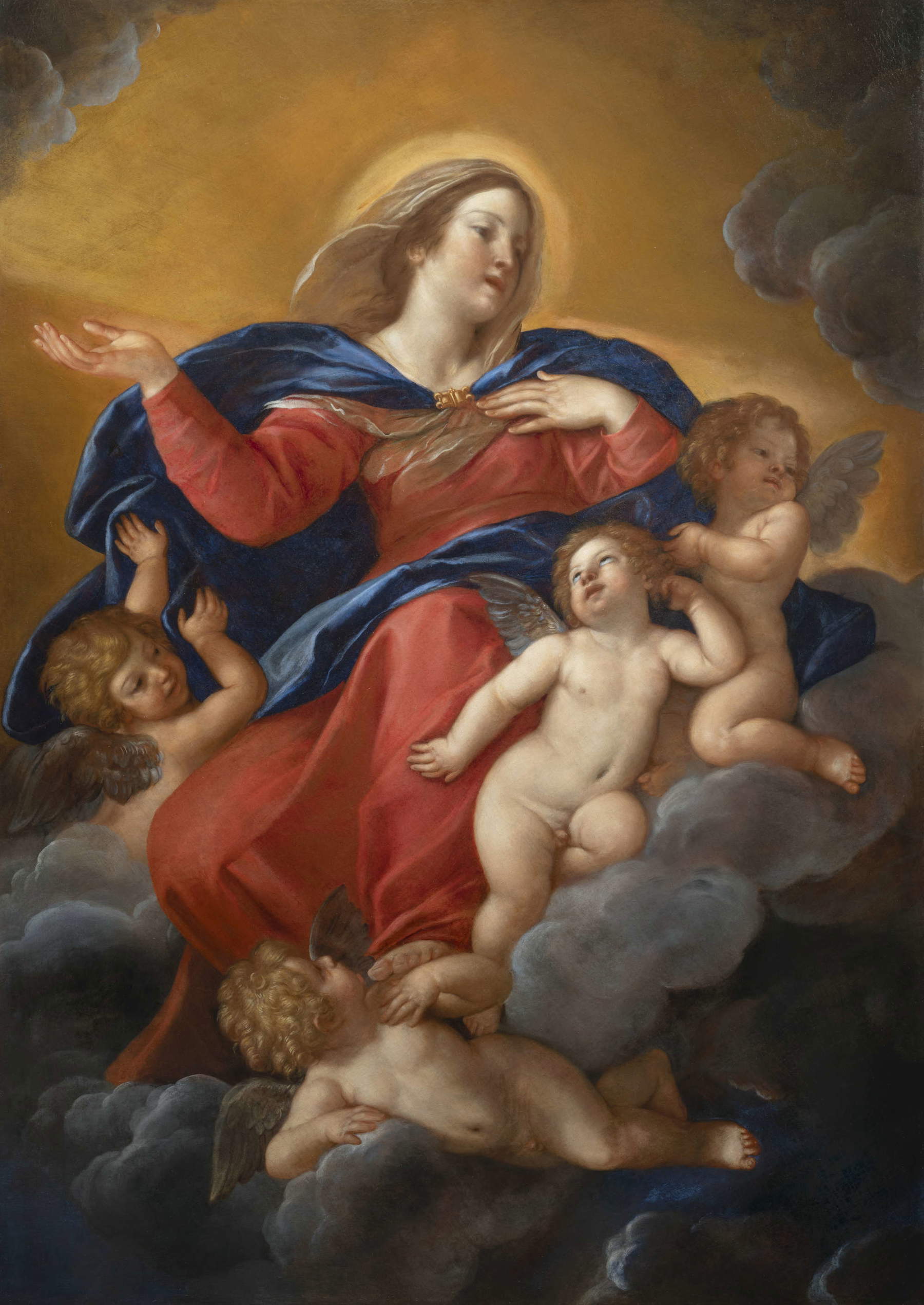
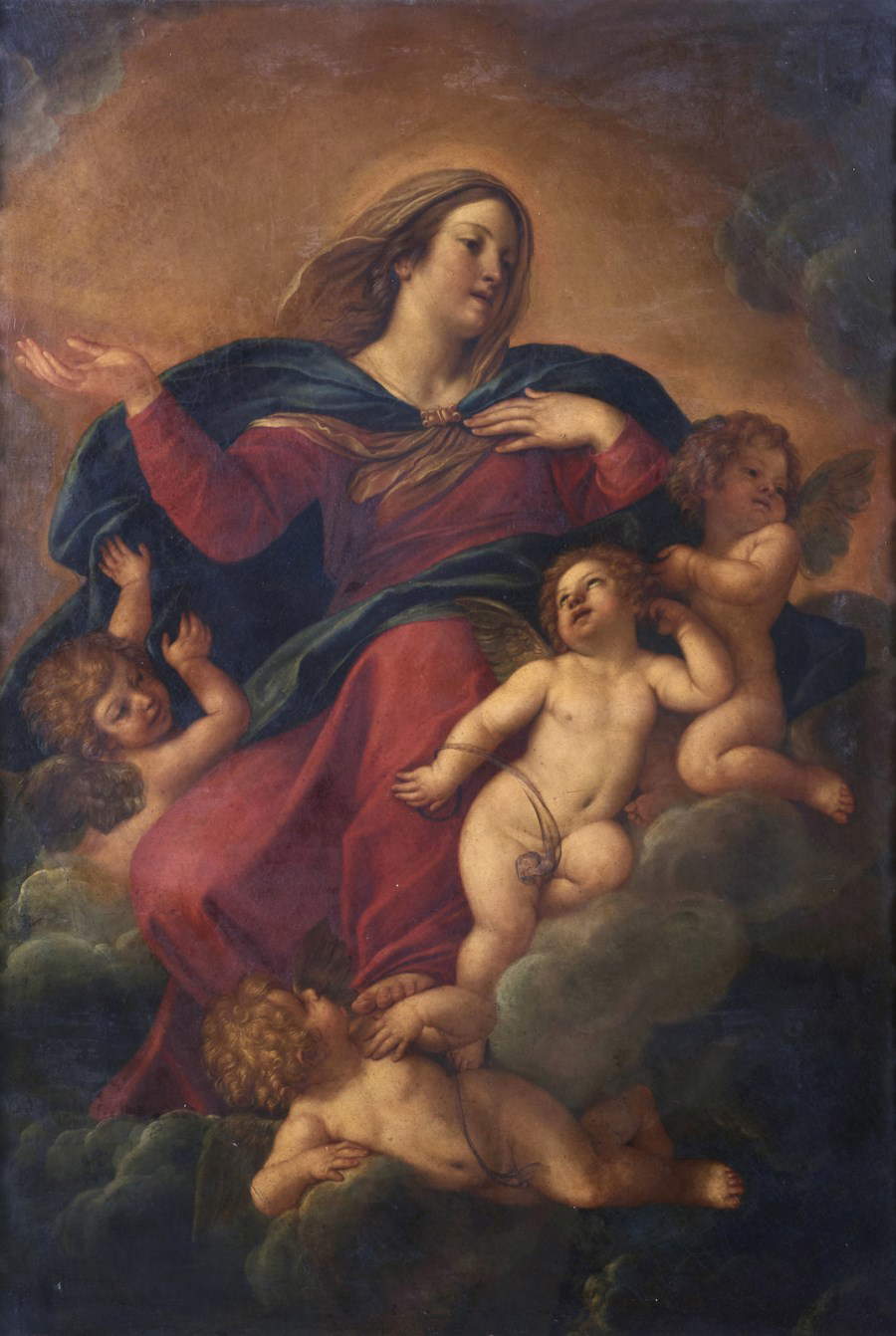
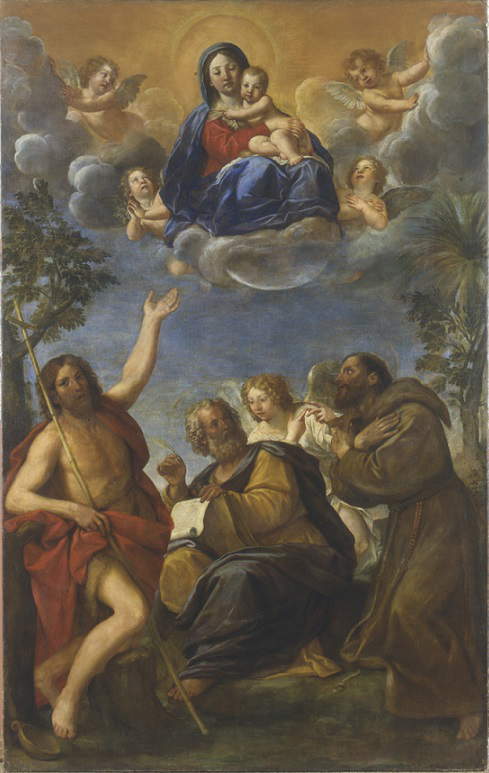
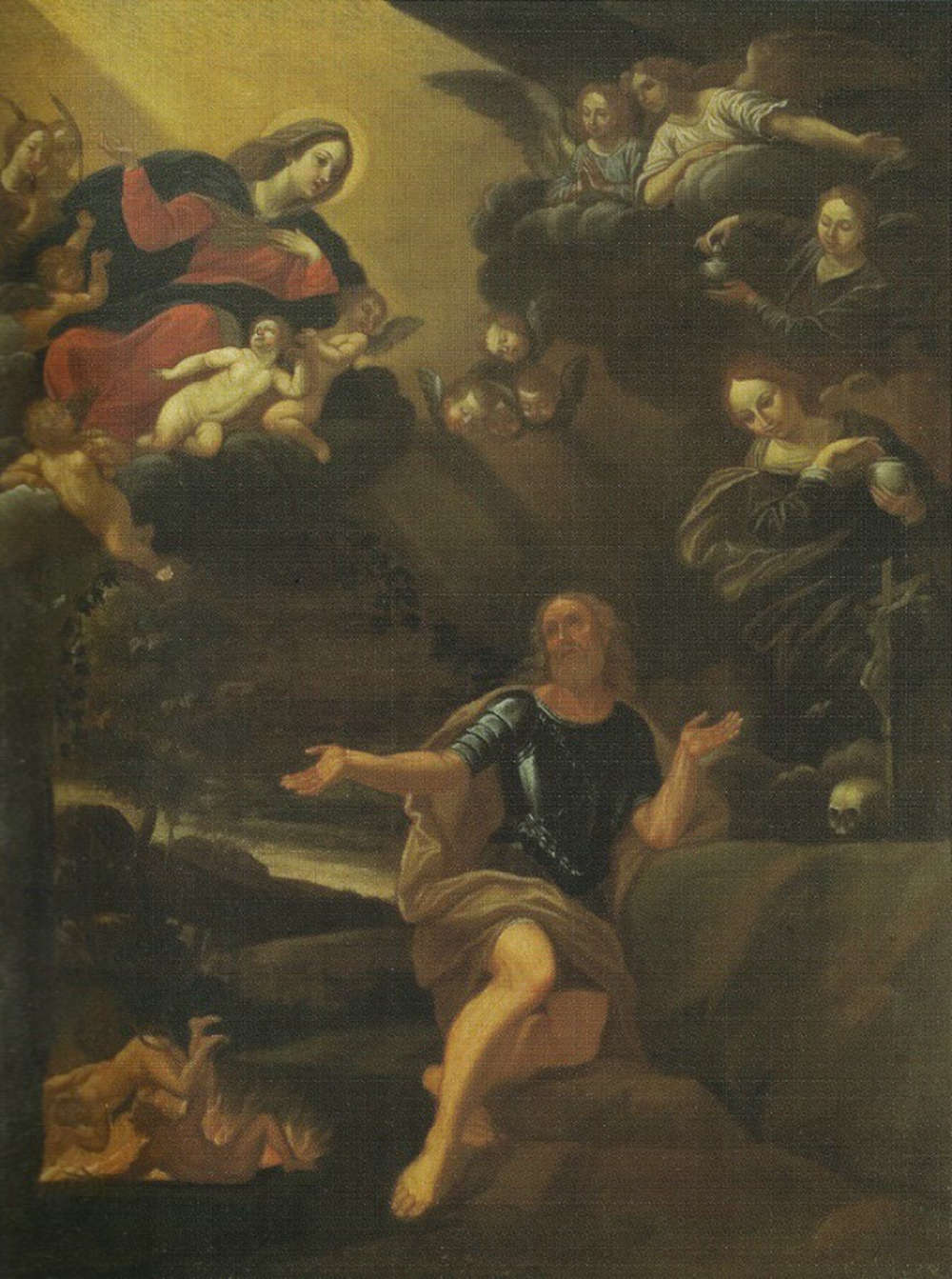
This is a work behind which the figure of a woman is hidden, as mentioned above: Sister Maria Agostina Tomaselli, niece of Popes Boniface IX and Innocent IX, earmarked her entire substantial inheritance for the construction of the church of Poerta Galliera, including the commissions for the paintings, which she personally chose (Guercino’s Circumcision , now in Lyon, was the altarpiece for thehigh altar; Jesus Appearing to St. Augustine by Michele Desubleo, now at the Pinacoteca Nazionale in Bologna; and, indeed, the Virgin Appearing to St. William by Francesco Albani). The monastery that arose in Via Galliera was also desired by Mother Tomaselli who, by employing the much money she could dispose of, could see her desire for a radical reform of the Augustinian community in Bologna, to which she belonged, fulfilled. In her undertaking she was spurred on and assisted by the powerful Jesuit Father Giorgio Giustiniani (1569-1644), who helped her manage her substantial inheritance and erect the new building. The correspondence exchanges that the nun had with the most important personalities of the time show the strength of will that Mother Agostina demonstrated in order to make her wish a reality.
Work officially began on August 17, 1637, and the exterior church was inaugurated on the night between December 31, 1645, and “the day of the Circumcision of our Lord,” or January 1, 1646. The nuns chose architectBonifacio Socchi, a pupil of Floriano Ambrosini, the most important Bolognese architect of the early 17th century, for the design of the monastery and church. For the sculptural decoration of the building the choice went to the artist Gabriele Brunelli, a pupil of the great Alessandro Algardi, who collaborated with a great painter, Simone Cantarini, for the design of the sculptural apparatus. Finally, after a receding study by Massimo Medica, it emerged that the church also housed Guercino’s Portrait of Gregory XV, now in the Paul Getty Museum in Los Angeles, and the extraordinary Bust of Gregory XV by Gian Lorenzo Bernini now in the Museo Civico Medievale in Bologna. With Napoleon’s entry into Italy and the formation of the Cisalpine Republic, Guercino’s altarpiece was transported to Paris and from there to the Museum of Fine Arts in Lyon where it found its final home. Michele Desubleo’s painting is now preserved at the Pinacoteca Nazionale in Bologna, while the fortunes of Francesco Albani’s altarpiece were somewhat troubled. The Augustinian complex was suppressed on June 21, 1798, and on January 2 of the following year it was converted into a military hospital, then sold to private individuals. Most of the building, including the church and bell tower, were demolished and the materials reused, both in the wall supporting the Montagnola embankment and for the construction of the lost Teatro del Corso on Via Santo Stefano. È
From there on, two centuries of oblivion prevented the viewing of this work, which was among those affected by the Napoleonic spoliations that did not spare the church in which the work was located. The church was later destroyed, and its decorative apparatus dispersed. Francesco Albani’s canvas was first mentioned by Antonio Masini in his Bologna Perlustrata: “by Francesco Albani the S. Guglielmo to the right of the entrance.” It was later mentioned, as noted by Sinigaglia, by Carlo Cesare Malvasia in Felsina Pittrice and the Pitture di Bologna: “Jesus and Mary, by Augustinian Nuns, architected by Bonifacio Socchi. In it in the first chapel the Saint William in soldier’s dress, and genuflected before the Crucifix and with above in the middle of the ornament the choir of Seraphim, are by Albani.” Francesco Albani, according to Sinigaglia’s findings, finished the painting by 1646 because, as indicated in the contract of March 17, 1646 between the nuns and Bonifacio Socchi, by those dates the two side chapels were already completed and thus provided with the decorative apparatus: “Except [...] still the Cappella Maggiore, the rest is provided, and duoi Confessionarij has been made.” Consistent with the choice to dedicate the canvas of the left chapel to St. Augustine, the altarpiece on the right was named after another patron saint of the Augustinians, William of Aquitaine. As noted in the Monastery’s unpublished Memoirs, for the canvas by the celebrated and esteemed Francesco Albani the nuns paid 2,000 liras.
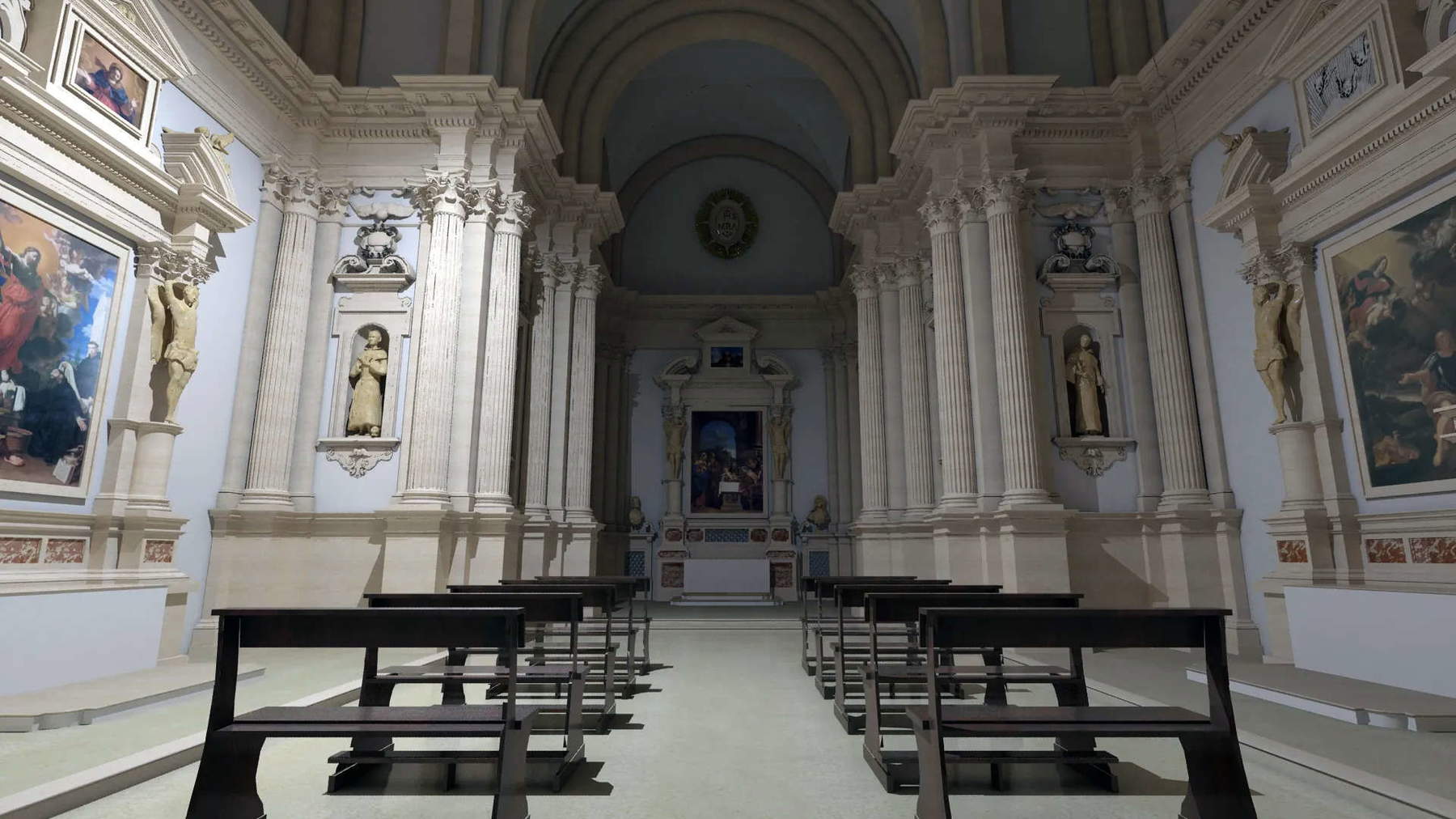
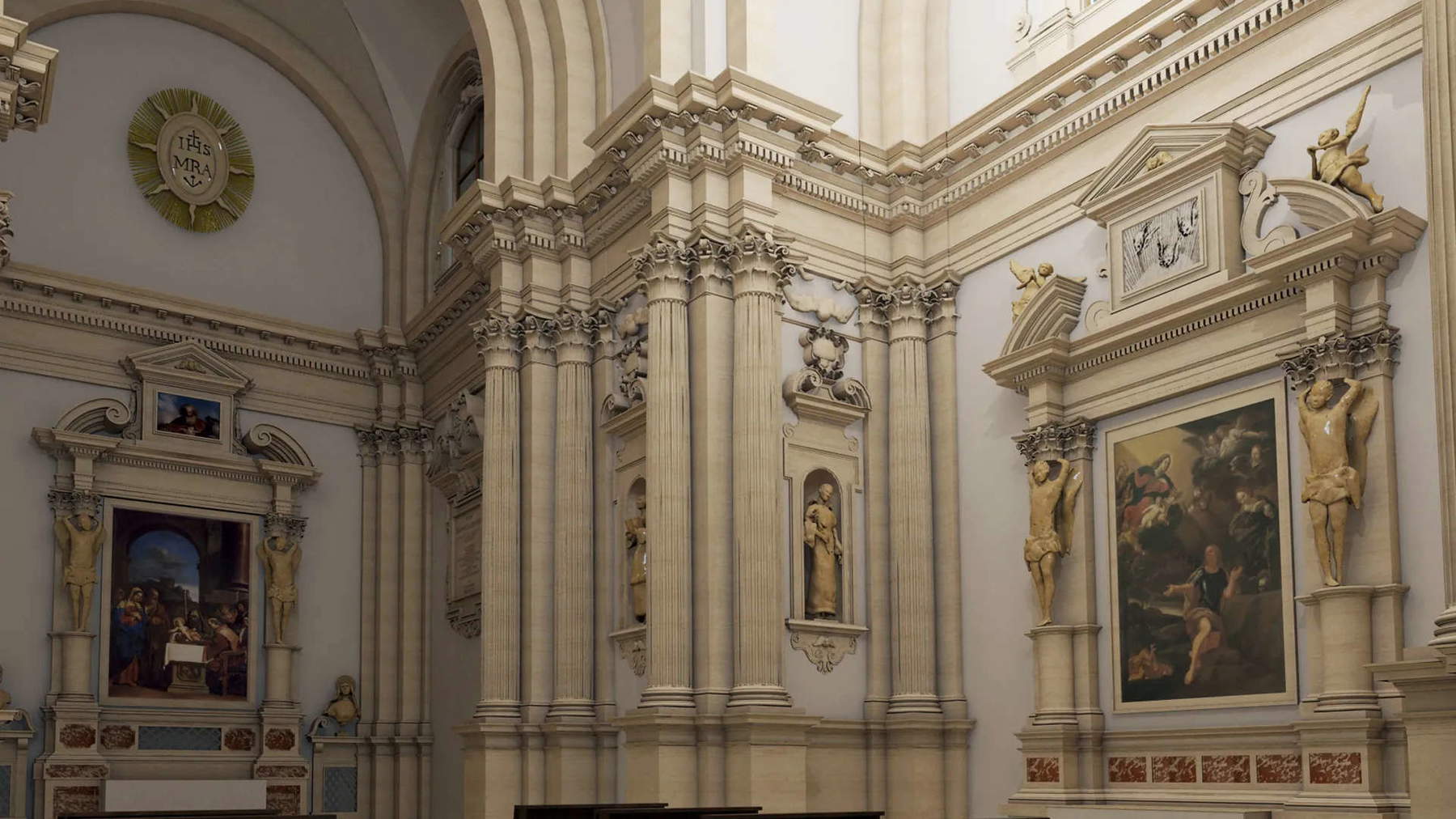
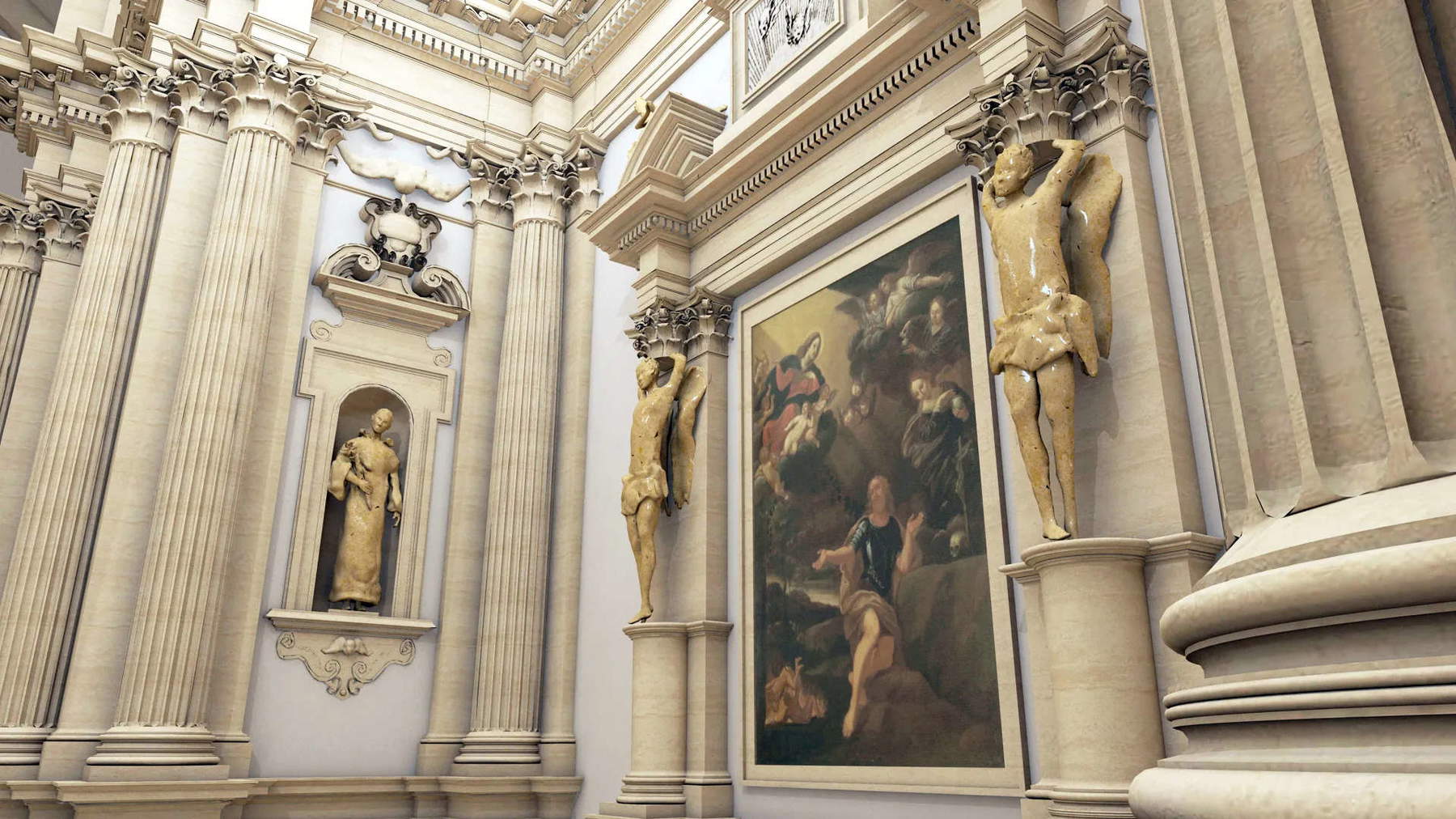
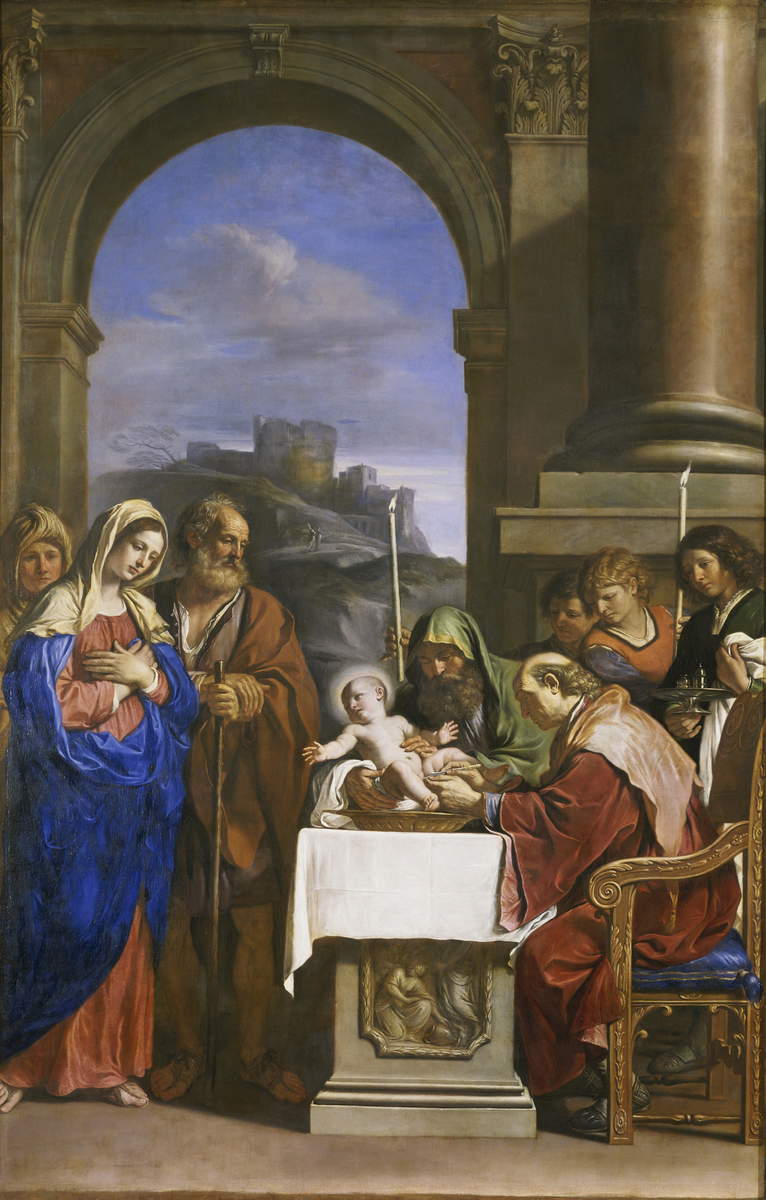
Thanks to an eighteenth-century copy in a reduced format (120 x 90 cm), made before the painting was dismembered and now privately owned, we can observe the artist’s iconographic choices that faithfully retrace the seventeenth-century hagiographic passage dedicated to Saint William of Aquitaine. The artist chose to depict the saint in traditional knightly garb, genuflected before the Cross and rescued from above by the Virgin and angels who help him resist the blows of demons, engulfed by tongues of fire. However, following the Napoleonic suppressions of the Church of Jesus and Mary, Francesco Albani’s altarpiece met an inauspicious fate: the painting’s collecting history is highly complex and does not fully explain why, of the three paintings that adorned the church, only this one experienced such tribulated vicissitudes. In fact, the painting was first transferred to the storerooms of the now suppressed convent of San Vitale, where it is described in a 1799 inventory (“St. William genuflected in soldier’s dress and above the B.V. with glory of angels panel by Albani”). Later, it was transported to the then Reale Pinacoteca dell’Accademia di Belle Arti in Bologna, where it appears in the inventories of 1801 (“San Guglielmo genuflesso in abito da soldato, e sopra la Vergine, ed Angeli dell’Albani” accompanied by the sopraqquadro con “Gloria di Serafini dell’Albani”), 1810 (“3. [Albani] Saint William to whom the Virgin appears. 383x258. Nuns of Jesus and Mary. This is made by Vecchio, it is very weak and suffering.”) and 1820 (“B.V. in Glory, in the plane below St. William genuflected, and St. Mary Magdalene. High P 16.8 Wide P 11.2” and “Albani. Circle of Seraffini. High P 3.9 Wide P 5.10 and ½. In poor condition.”). In 1821 the work was sold to Count Cesare Bianchetti, one of the most representative figures of aristocratic Bologna in those years, who occupied a prominent position as Legate Pro-President of the Academy. In 1821 the nobleman decided to have the restorer Antonio Magazzari cut the painting into four parts , separating the four most important groups: thus the upper part was divided into the two pieces of the Madonna in Glory with cherubs, while in the lower part it was decided to isolate the Saint William from the Magdalene, of which the fragment with the skull remains. Gaetano Giordani’s annotation inside Felsina Pittrice added news about the piece with the Virgin and Angels: “This painting was cut into several pieces the upper group with the Virgin, Child and Angels has now been engraved by the talented academic Sig. Antonio Marchi.” The latter had won the competition organized by the Academy in 1835 for the Curlandese Prize, presenting precisely the engraving of the upper part of the canvas by Francesco Albani. The engraver had been able to make the work having seen the fragment of the Madonna in Glory with cherubs in the home of Count Merendoni, who had received it from Count Cesare Bianchetti.
Later, the four fragments had different and uncertain collector passages; the only one of which we have news is the San Guglielmo, which, having first passed from the Zambeccari collection, re-entered the halls of the Pinacoteca Nazionale in Bologna and was catalogued in the administrative inventory of 1917 as “Venetian School of the 17th.” The Skull was instead reported in Milan at Nené Piatti Antichità di Giovanni Minozzi, still accompanied by the nineteenth-century inscription of the first restorer, to finally return to the Pinacoteca Nazionale di Bologna since 2006 thanks to the donation of architect Vincenzo Vandelli. Of the sopraqquadro with the Coro dei Serafini there is no news after its sale to Count Cesare Bianchetti. Based on Antonio Marchi’s print, in 1969 the Madonna in Glory with cherubs was spotted by Eric Van Schaack in a private collection in Bologna, where it was documented by a photograph taken at the beginning of the last century by Felice Croci, later recovered and also reproduced by Catherine Puglisi in her 1999 monograph. The rest is history of the last few months: after coming back to light on the market in 2023, it was purchased by Tiziana Sassoli’s Fondantico, which entrusted its cleaning to Andrea Cipriani of Florence. And Francesco Albani has found himself.
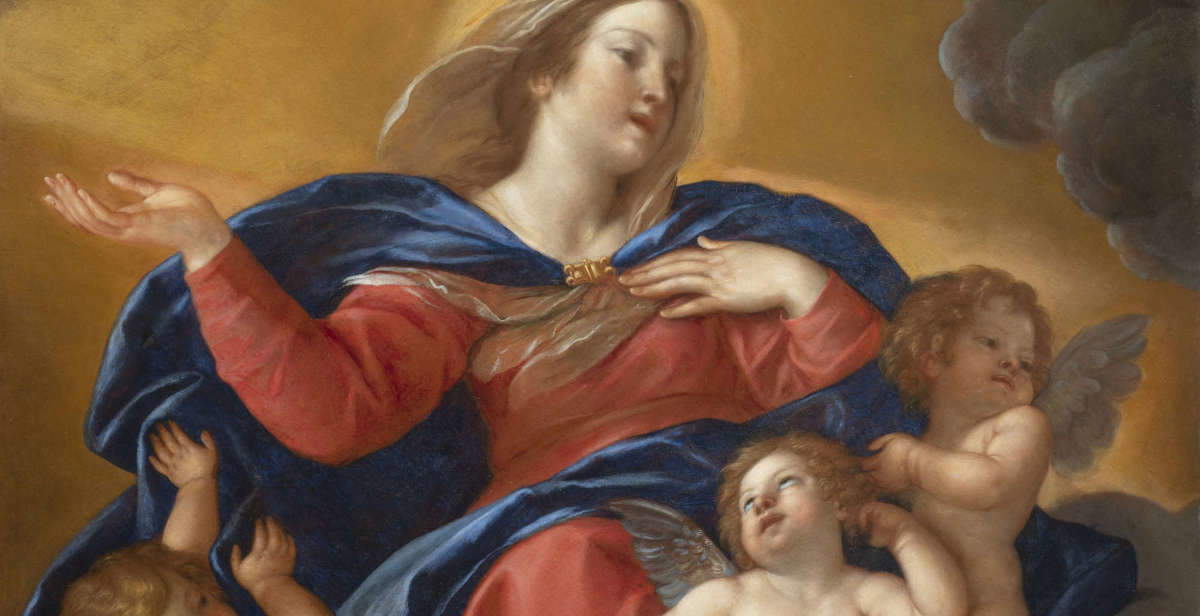 |
| A masterpiece by Francesco Albani resurfaces from oblivion |
Warning: the translation into English of the original Italian article was created using automatic tools. We undertake to review all articles, but we do not guarantee the total absence of inaccuracies in the translation due to the program. You can find the original by clicking on the ITA button. If you find any mistake,please contact us.





























